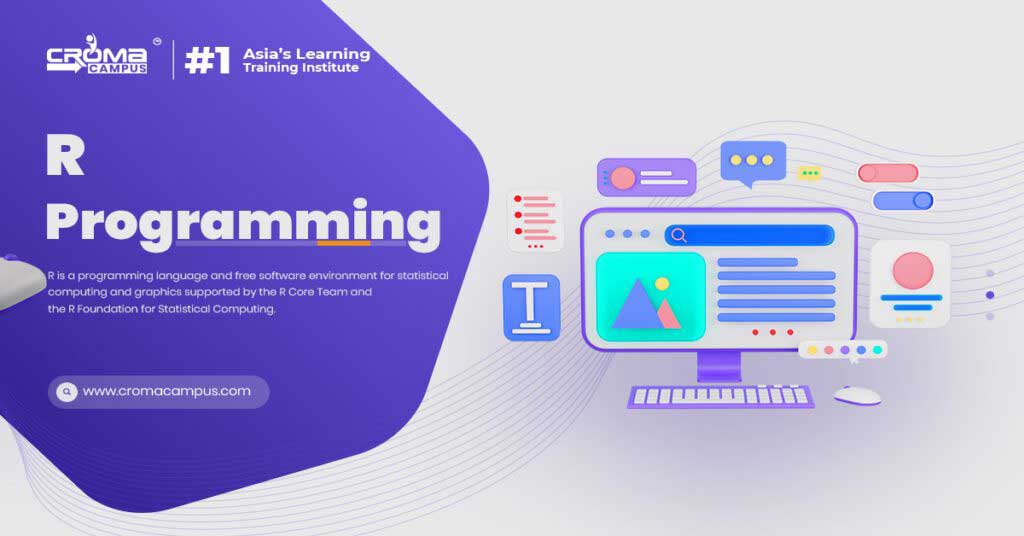
Introduction
R programming has emerged as a cornerstone in the realm of data analysis and statistical computing, offering a robust toolkit for researchers, analysts, and data scientists alike. With its open-source nature, rich package ecosystem, and powerful statistical capabilities, R has garnered widespread acclaim in both academia and industry. The R Programming Online Course has gained immense demand amongst the aspiring developers. Therefore, joining this training course can be a wise career move for the tech enthusiasts.
In this article, we explore the top 12 benefits of R programming, showcasing its versatility, efficiency, and effectiveness in tackling diverse data challenges.
12 Important Benefits Of R Programming
In modern times, the importance of data analysis and statistical computing cannot be overstated. Among the myriad of tools available, R programming stands out as a versatile and powerful language for statistical analysis and data visualization. With its rich ecosystem of packages and libraries, R offers a plethora of benefits to data scientists, statisticians, researchers, and analysts.
Let’s delve into the top 12 Advantages of R Programming:
1. Open Source Nature
One of the most significant advantages of R is its open-source nature. R is freely available to everyone, allowing for widespread adoption and collaboration within the community. This fosters innovation and continuous improvement as users can contribute to the development of packages and functionalities.
2. Rich Package Ecosystem
R boasts a vast repository of packages contributed by developers worldwide. These packages cover various domains such as data manipulation, statistical modelling, machine learning, visualization, and more. This extensive collection of packages makes R a versatile tool for virtually any data analysis task.
3. Statistical Analysis
R was designed with statistical analysis in mind, making it particularly well-suited for tasks such as hypothesis testing, regression analysis, time-series analysis, and multivariate analysis. Its robust statistical functions and algorithms enable researchers to conduct sophisticated analyses with ease.
4. Data Visualization
Visualization is a crucial aspect of data analysis, and R excels in this area. With packages like ggplot2, plotly, and ggvis, users can create stunning visualizations that effectively communicate insights from their data. From basic histograms to interactive plots, R offers a wide range of visualization options.
5. Reproducible Research
R facilitates reproducible research by allowing users to document their analyses in a systematic and transparent manner. Through tools like R Markdown and knitr, researchers can create dynamic reports and presentations that integrate code, visualizations, and explanatory text. This promotes transparency, collaboration, and the dissemination of research findings. One can join R Programming Online Course to learn more about this programming language.
6. Integration with Other Tools
R seamlessly integrates with other tools and languages, enhancing its flexibility and interoperability. For example, R can be integrated with databases like MySQL and PostgreSQL, as well as programming languages like Python and Java, enabling smooth data exchange and workflow automation.
7. Community Support
The R community is vibrant and supportive, offering resources such as forums, mailing lists, and online tutorials. Whether you’re a novice or an experienced user, there’s always a wealth of knowledge and expertise available to help you overcome challenges and expand your skills.
8. Cross-Platform Compatibility
R is cross-platform compatible, meaning it can run on various operating systems, including Windows, macOS, and Linux. This flexibility allows users to work seamlessly across different environments without encountering compatibility issues.
9. Machine Learning Capabilities
While R is renowned for its statistical prowess, it also boasts robust machine learning capabilities. With packages like caret, MLR, and TensorFlow, users can build and deploy machine learning models for tasks such as classification, regression, clustering, and dimensionality reduction.
10. Interactive Data Analysis
R provides interactive tools like Shiny, which enable users to build web-based dashboards and applications for interactive data analysis and visualization. These interactive interfaces empower stakeholders to explore data dynamically and derive insights in real-time.
11. Educational Resources
R is widely used in academia for teaching and research purposes, leading to a wealth of educational resources such as textbooks, online courses, and tutorials. Whether you’re a student, educator, or self-learner, there are abundant resources available to help you master R programming.
12. Scalability and Performance
Despite being primarily an interpreted language, R offers scalability and performance optimizations through techniques like parallel computing and efficient memory management. With careful optimization and utilization of packages like parallel and data.table, users can handle large datasets and complex computations efficiently.
Conclusion
In summary, there are innumerable Advantages of R Programming that make it a preferred choice for data analysis and statistical computing. From its open-source nature and rich package ecosystem to its robust statistical capabilities and interactive tools, R empowers users to tackle a wide range of data challenges effectively. Whether you’re a seasoned data scientist or a beginner exploring the world of analytics, R provides the tools and resources you need to succeed in the field of data science.








